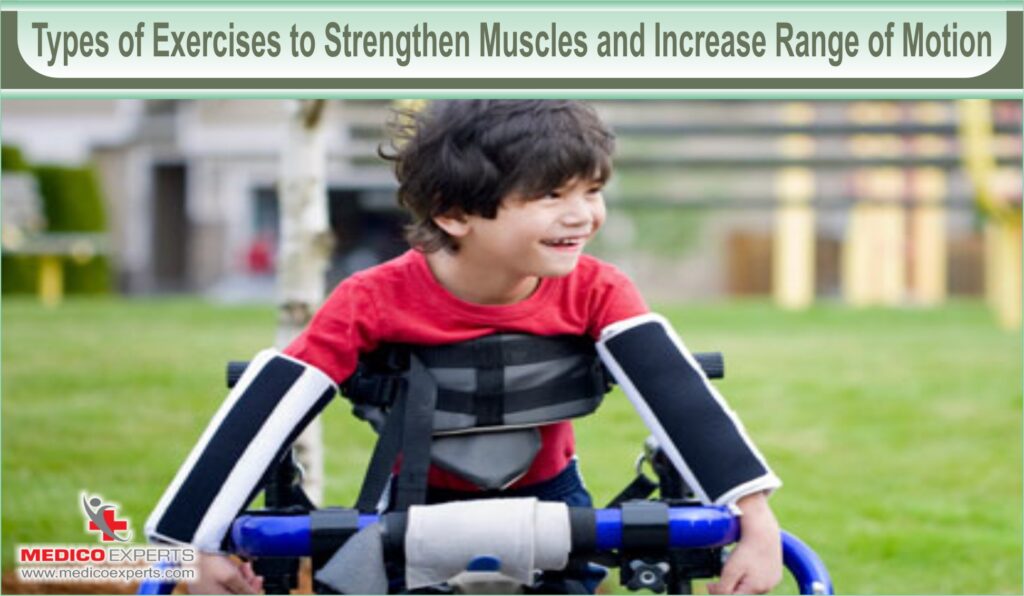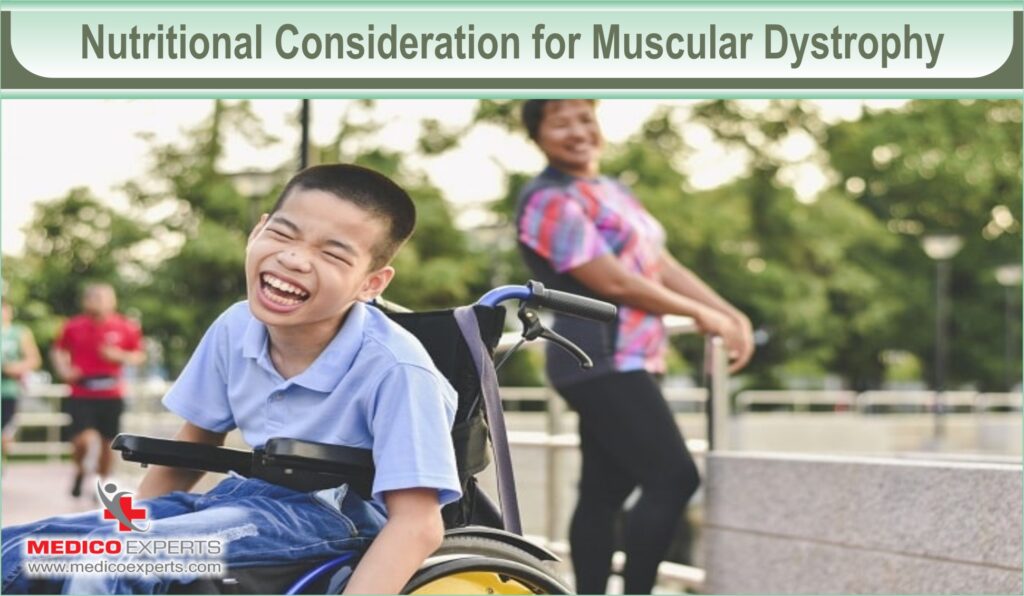Managing muscular dystrophy through exercise requires careful consideration and expert guidance.
While exercise may seem counterintuitive1 due to muscle weakness, tailored routines can help maintain mobility and overall health.
Targeted exercise not only preserves strength and endurance but also improves blood circulation, reducing fatigue and promoting well-being.
So here’s a detailed guide on muscular dystrophy exercises to stay active and fit.
What is Muscular Dystrophy?

Muscular dystrophies, a group of muscle diseases caused by genetic mutations, can gradually take away a person’s mobility and make it difficult to perform everyday tasks. Muscular dystrophy occurs when mutated genes disrupt the creation of necessary proteins that build strong muscle tissue.
Muscles gradually shrink and weaken, which impairs walking and everyday activities such as teeth brushing. Additionally, the condition can have an impact on the heart and lungs.
There are different types of muscular dystrophy that affect specific muscle groups, with varying symptoms and severity. While certain types of muscular dystrophy are noticeable from birth or during childhood, others manifest in adulthood.
For more information on types, symptoms, process, and treatment options related to muscular dystrophy read here…
How Can Exercise Benefit Those Living with Muscular Dystrophy?

Here are some of the benefits of exercises for muscular dystrophy:
- Regular exercise is crucial for individuals with muscular dystrophy, as it improves strength, mobility, flexibility, and overall quality of life.
- Exercise helps maintain muscle mass, prevents contractures, and reduces swelling, inflammation, and pain associated with weak muscles.
- Improved balance and coordination from exercise can enhance mobility and reduce the risk of falls.
- Multiple studies confirm that exercise is a safe and effective treatment option for muscular dystrophy, promoting muscle growth, strength, and physical capability.
- Exercising regularly enhances strength, endurance, function, and quality of life while reducing occurrences of anxiety, depression, and pain, and boosting mental health and energy levels.
Types of Muscular Dystrophy Exercises to Strengthen Muscles and Increase Range of Motion

The types of exercises that are recommended for those with muscular dystrophy depend on the individual’s condition but overall are aimed at improving strength, flexibility, and range of motion.
Stretching:
If you’re experiencing inflexibility, balance issues, back pain, or decreased range of motion, stretching for 10 minutes a day is the most helpful regardless of the time of day you choose to do it.
There are various stretching techniques including dynamic, static, ballistic, and others. However, it is best to understand and concentrate on the two primary types: dynamic and static stretching.
Static stretching
When it comes to stretching, people often think of static stretching. In this type of stretching, you hold a position that is slightly uncomfortable for about 30 seconds and then repeat it two to three times. An example of this would be the quad stretch where you stand on one leg, bend the other knee, and hold onto your foot.
Dynamic stretching
Before exercising, it is common to perform dynamic stretching. When done correctly, this type of stretching warms up your muscles and lubricates your joints.
An example of a good dynamic stretch is swinging your arms back and forth across your chest before doing pushups.
Strength training:
Are you interested in strength training? If so, you can sculpt your muscles using free weights, machines, or calisthenics! Weight training or using resistance bands can help build strength and improve muscle tone.
While some workouts suggest low repetition and heavy weights, people with muscular dystrophy can try a different approach. Instead, lightweight and high-volume routines can deliver fantastic resistance and stretching benefits with a lower risk of injuries.
Start small by using weights between 2-10 pounds, increasing gradually as needed. Similarly, using your own body to perform calisthenics exercises allows you to adjust the “weight” according to your abilities. You can also benefit from compound exercises, which help improve balance and coordination by training the entire body in unison.
It is important to remember that one should not overexert themselves and take breaks when needed.
Cardio:
Cardiovascular activities such as walking, cycling, or swimming can help build endurance and prevent contractures.
Range of motion exercises:
Range of motion exercises can help maintain joint mobility and keep joints flexible.
So, if you’re looking to build strength while taking care of your body, consider these tips to establish a sustainable routine that works for you!
Stretching is best done when your muscles and joints are warm. After taking a bath or being active are both good times to do stretches because they are safer and easier.
- Good muscle length and range of movement are essential for everyday activities such as washing and dressing. Adequate range in your shoulder joint, for instance, will make these tasks easier to perform.
- Rare neuromuscular conditions can cause tightness or contractures in the spine or other joints. When dealing with these conditions, the objective of the stretching activities would be to maintain your current flexibility rather than increase it.
- Please be careful not to overwork muscles or joints that are already flexible and weak.
- Yoga, Pilates, and Tai Chi are exercises that involve stretching. Moreover, gentle yoga and Pilates can prove to be effective in alleviating your discomfort, and improving your muscle tone while also reducing joint stiffness.
Neuromuscular therapists and Pilates instructors have created Pilates videos tailored for individuals who have muscle-wasting conditions. To access these videos, please click on the link provided below:
Link: youtube.com/playlist?list=PLazCbfp_tqxyve043vSch45aPfMzFfHxX
You can modify these exercises and stretches according to your comfort. By learning and holding different positions, you can stretch and engage new muscles that you haven’t used before. It’s best to begin with beginner positions, holding each one for 10-30 seconds while taking controlled breaths.
What is the recommended frequency and duration for stretching sessions?

Regularly doing stretches is more effective.
- You can include stretching in your daily routine, such as stretching your calf muscles while brushing your teeth.
- Make sure to hold each stretch for 30-40 seconds and avoid bouncing.
- Keep the stretch slow and sustained.
It is important to speak with your doctor or physical therapist about the best types of exercise for your individual needs.
Tips for Safely and Effectively Exercising for Those Living with Muscular Dystrophy?

Doing the exercises safely and effectively should be your top priority. Here’s how you can do that:
1. Start slowly and work up gradually.
Exercise should not be an endurance event; it should be done gradually to allow the muscles time to adjust.
2. Find a safe environment and use appropriate equipment.
Always check with your physical therapist or doctor before starting any exercise program, especially if you have another medical condition in addition to muscular dystrophy.
3. Stay hydrated and take breaks throughout the workout.
Dehydration can lead to fatigue, so it is important to keep your body hydrated while exercising. Also, be sure to rest in between sets of exercises as too much exercise without proper rest can cause more harm than benefit.
4. Maintain correct posture and form.
Proper form can help prevent injury and will also allow you to get the most out of your exercises.
5. Focus on a full-body workout, not just one area or muscle group.
Exercises that work multiple muscle groups are great for helping with overall strength, balance, and coordination.
Following these tips and maintaining a regular exercise routine can help improve your overall muscle strength, flexibility, balance, coordination, and range of motion. With the right support system and dedication to your health, you can enjoy an active lifestyle with muscular dystrophy!
Nutritional Consideration for Muscular Dystrophy

In addition to incorporating physical activity into your regular routine, it is equally important to maintain a healthy diet and nutrition regimen. Having a balanced diet with the right combination of carbohydrates, proteins, and fats can help to increase muscle strength and prevent further damage or degradation.
It is important to talk with your doctor or nutritionist to determine the best nutritional plan for you. Some tips to consider when creating a nutritional plan are:
- Eat a variety of healthy whole foods such as fruits, vegetables, and lean meats.
- Avoid processed foods, added sugars, and high-fat snacks.
- Increase your intake of complex carbohydrates such as whole grains and legumes.
- Make sure you are drinking enough water throughout the day to stay hydrated.
- Choose healthy fats such as avocados, olive oil, and nuts.
- Take a multivitamin daily to ensure you are providing your body with all the necessary vitamins and minerals.
Following a healthy diet and exercise plan can help those with muscular dystrophy to maintain muscle and improve mobility.
Conclusion :
Living with muscular dystrophy can be a challenge but with proper care, you can manage the physical and emotional effects of this disease. A combination of physical activity, proper nutrition, and rest can help to improve muscle strength, endurance, range of motion, coordination, and balance.
The team of MedicoExperts is here to help you on your journey. We understand the importance of taking care of your physical and mental health, and we are dedicated to providing the best care possible. Contact us today to learn more about our services and how we can help you manage your muscular dystrophy symptoms.
With proper exercise and nutrition, you can lead a full and active life with muscular dystrophy. Remember to stay patient with yourself, focus on your successes, and don’t be afraid to ask for help. We’re with you every step!
Frequently Asked Questions
Q1. What is the best exercise for muscular dystrophy?
A: The best type of exercise for people with muscular dystrophy is a low-impact aerobic activity, such as swimming or cycling. It is important to start slowly and gradually increase intensity over time. Working with a physical therapist can help you create an individualized exercise plan that is tailored to your specific needs.
Q2. What are 5 exercises that can improve joint mobility, flexibility, and function?
A. Please perform the following exercises: ankle mobility, hip opener, spine windmills, shoulder pass-through, and neck half circles. Additionally, please note any necessary precautions.
Q3. Does muscular dystrophy cause pain?
A. Over time, MMD patients may experience painful muscle cramping due to myotonia, which is when muscle fibers experience delayed relaxation or sustained contraction. This can lead to significant muscle wasting.
Q4. What type of doctor should I see for muscular dystrophy?
A. A neurologist is the best type of doctor to consult when managing muscular dystrophy. They can provide an accurate diagnosis, recommend treatment options, and monitor your health over time. Additionally, a physical therapist may be necessary to help with exercise and physical activity. Contact MedicoExperts for more information about our services.
Q5. What is the prognosis for someone with muscular dystrophy?
A. The prognosis for someone with muscular dystrophy can vary greatly depending on the type and severity of the disorder.
Some individuals may experience a slow progression of the disease while others experience rapid deterioration.
It is important to work closely with your doctor to monitor your condition and make lifestyle changes to manage symptoms. With proper care, you can lead a full and active life with muscular dystrophy.
References
- different from what you would expect ↩︎
https://jamanetwork.com/journals/jama/article-abstract/661263
https://www.ncbi.nlm.nih.gov/pmc/articles/PMC8862644/



